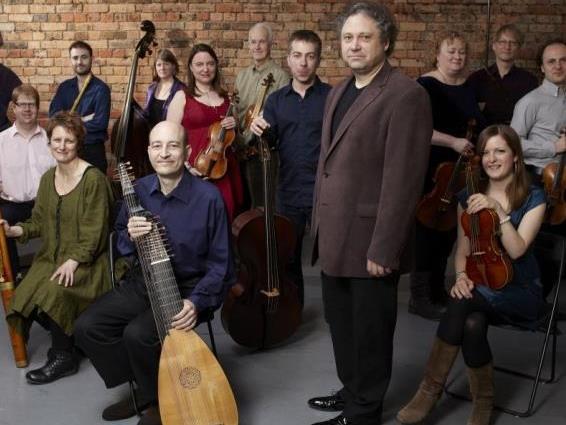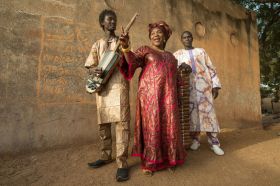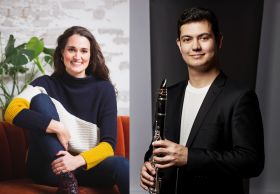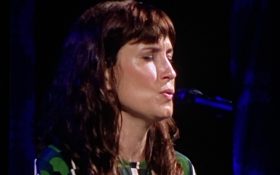Numerous ensembles in Australia have embraced this movement, to the great benefit of audiences throughout the country. However the Academy remains as important and welcome a visitor as it ever was.
Much of this has to do with the director of the academy since 2006. Richard Egarr is a brilliant harpsichordist in his own right. Appearances with the Australian Chamber Orchestra last year as guest director demonstrated that Egarr also has the personality to lead an ensemble such as this with his anecdotal-style introductions to the program very well received. Australian soprano Sara Macliver, with her restrained grace and pure voice, was the perfect foil for Egarr’s busy style and the ensemble’s energetic performance.
The program was notable in that it featured music by English baroque composers: Matthew Locke, Henry Purcell, Thomas Arne and the German-born George Frederick Handel. Locke’s instrumental suite from The Tempest with Egarr conducting from the harpsichord was a fine choice to begin proceedings. Less stormy than one might have imagined, the music centred on dances of the period beginning with a measured galliard, a theorbo adding dimension.
The interestingly named Curtain Tune built in intensity volume and speed before the more recognisable Rustic Air and then Martial Jigge, with a complex canon to end the work. It was followed by the longest item on the program, Purcell’s vocal and instrumental excerpts from The Faerie Queene. This was the signal for Macliver (in a bright sari-inspired red dress) to join the academy on stage. Her clear voice and excellent diction suited songs from Thrice Happy Lovers to the bell like sweetness of The Plaint, in which an oboe complemented singing of great feeling and beautiful phrasing.
The Academy relished the challenges of items such as Dance for the Green Man, Dance for the Haymakers and the Monkey’s Dance. The introduction of a baroque trumpet added a whole new dimension to the work and allowed for a beautiful duet with Macliver in Hark Now the Echoing Air, the final vocal item in the first half of the program.
After interval, his Overture No. 6 in B flat major revealed Thomas Arne’s music to be quite Handelian in its declamatory opening statements and measured pace. The work was notable for its contrasts and for the beautiful oboe, especially in the sprightly dance to end. This work was over all too soon.
Finally it was the turn of the great Handel himself. Macliver who always gives careful thought to her look on stage chose an eau de nil strapless dress for this final appearance, in which she would sing four arias of contrasting moods. The Academy also performed the Sinfonia from Saul, allowing all sections of the ensemble to shine. But it was their pairing with the soprano that gave the most satisfaction.
It was a fine piece of programming to end with the contrasting “angel” arias. Guardian Angel was at a stately pace, with the soprano exhibiting true pitch even on very high or long notes. Let the Bright Seraphim Is of course a party piece for sopranos, and proved exhilarating in company (or competition!) with the trumpet. But it was the unannounced encore that best illustrated Macliver’s voice, with pure and powerful notes sung with great sweetness.
Given the inspiration for this music it would not be going too far to say that’s the combination of the Academy and Macliver was a match made in heaven.
4.5 Stars
Academy of Ancient Music
Melbourne Recital Centre
12 November





